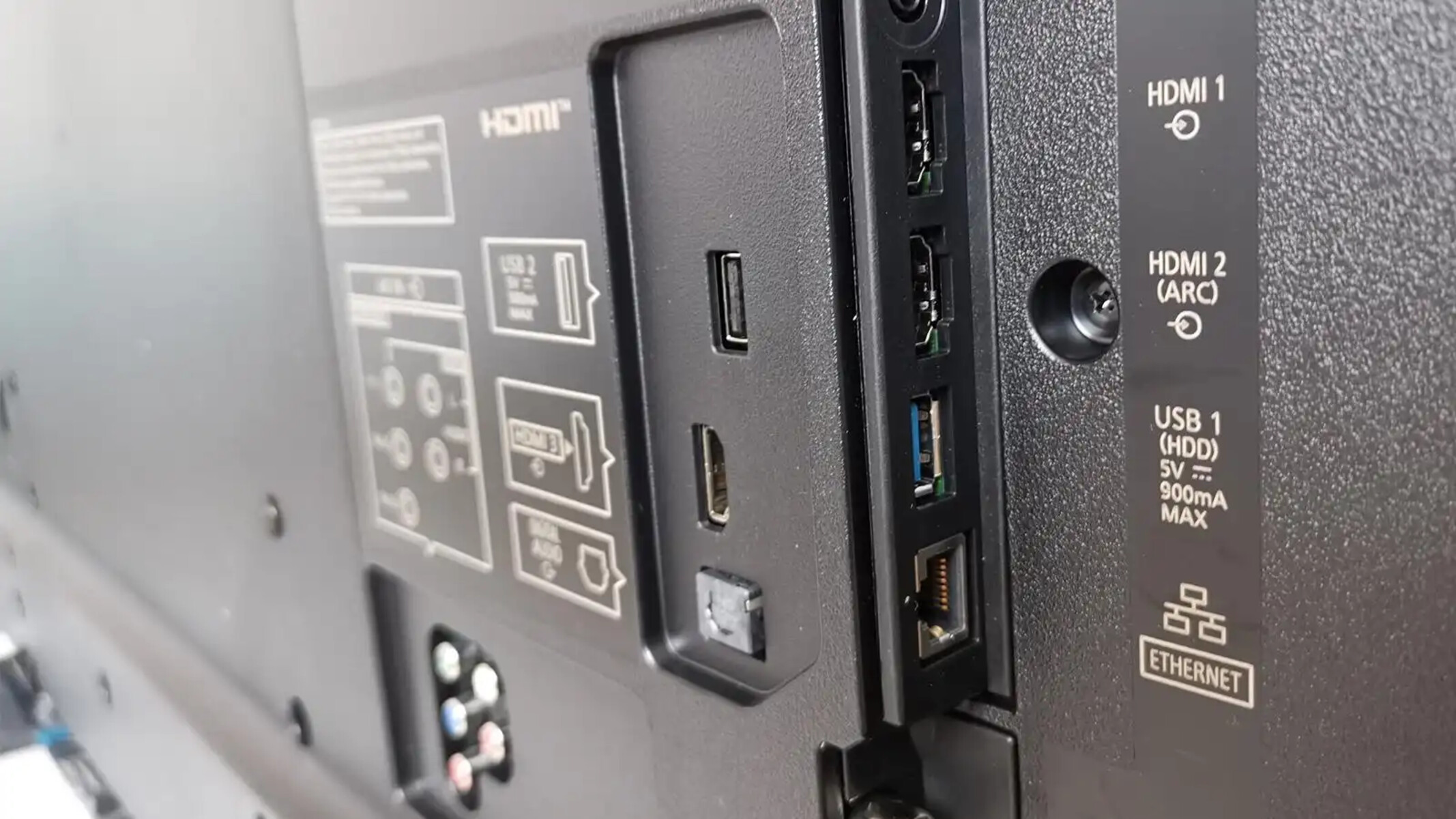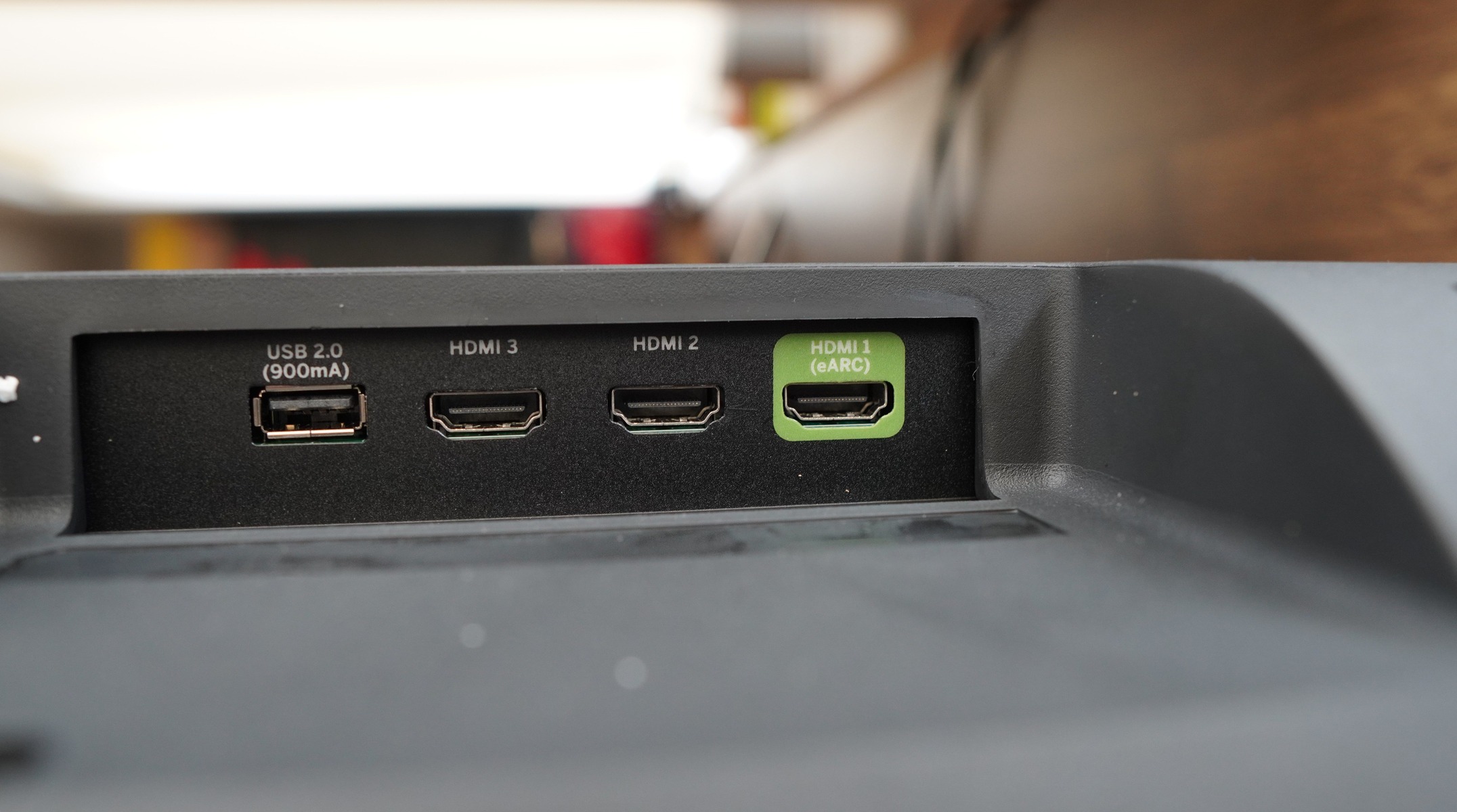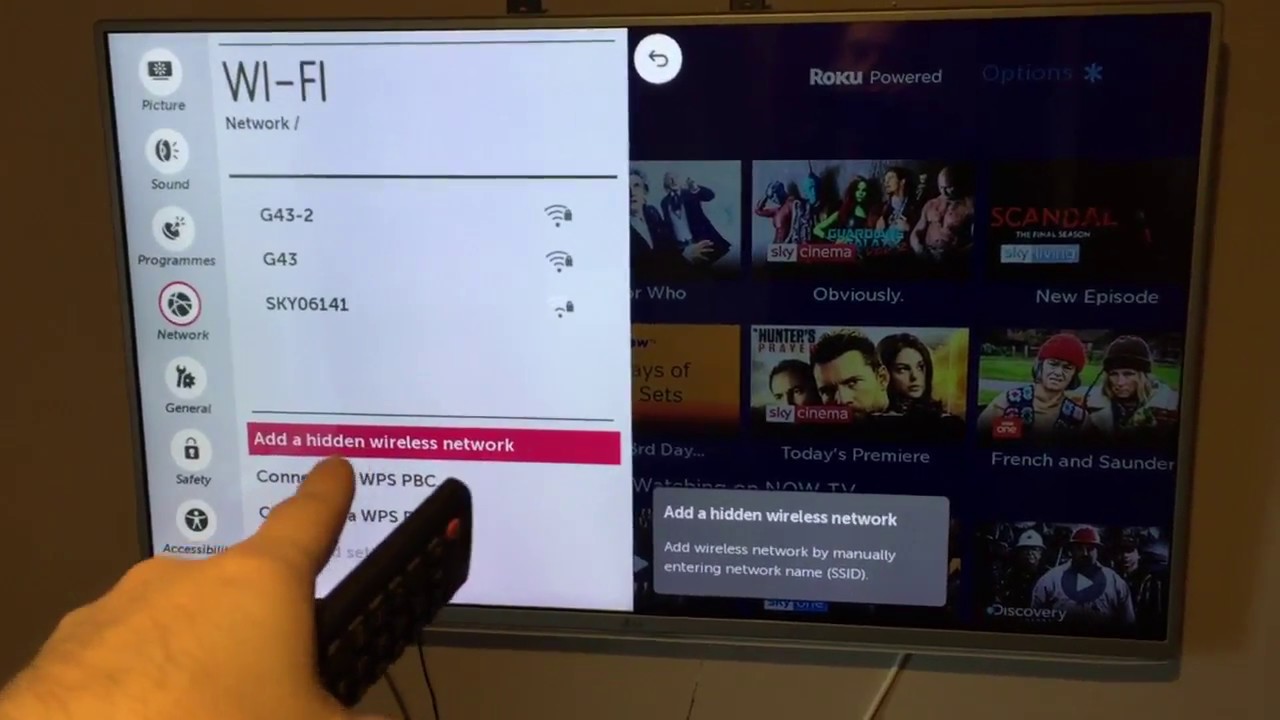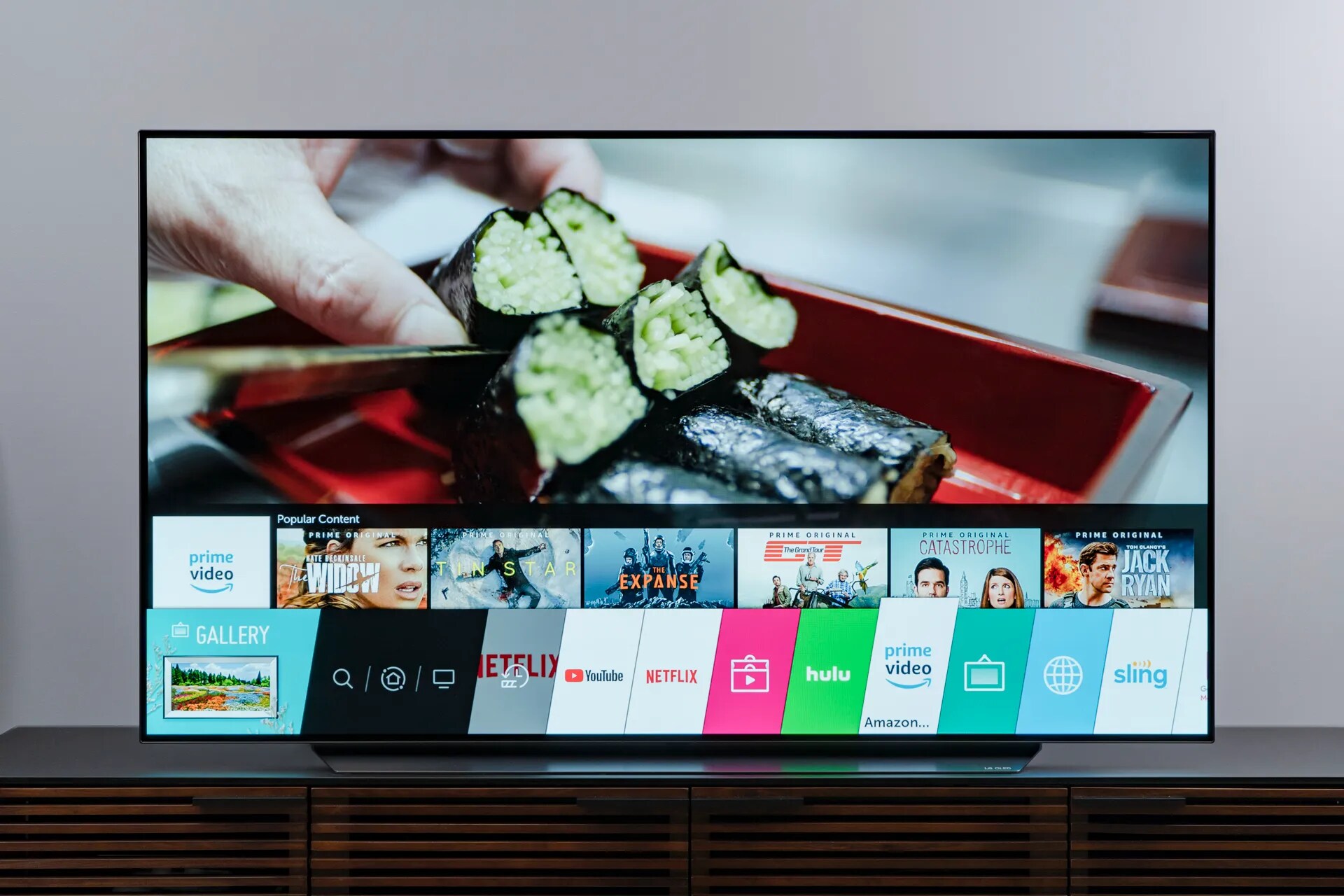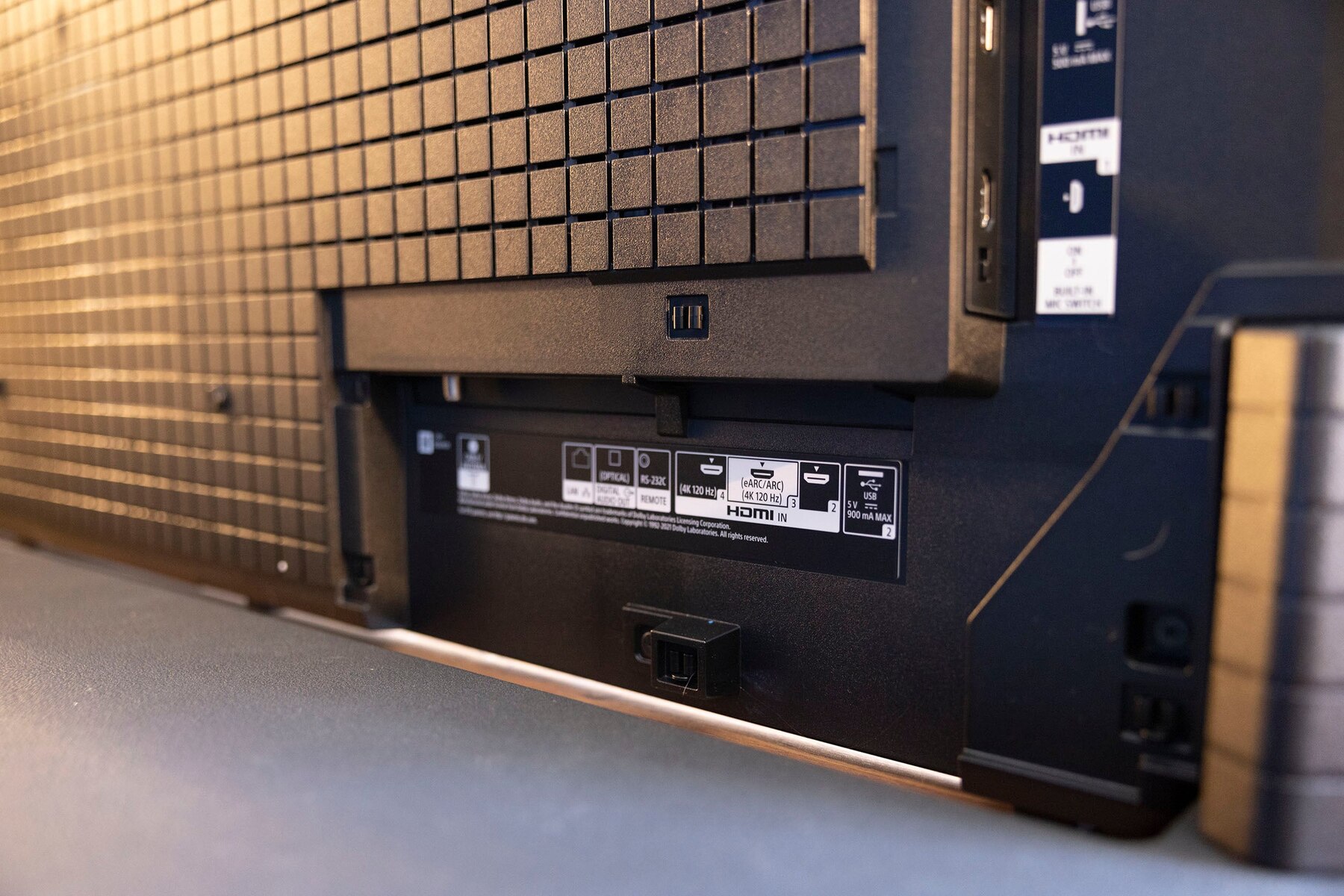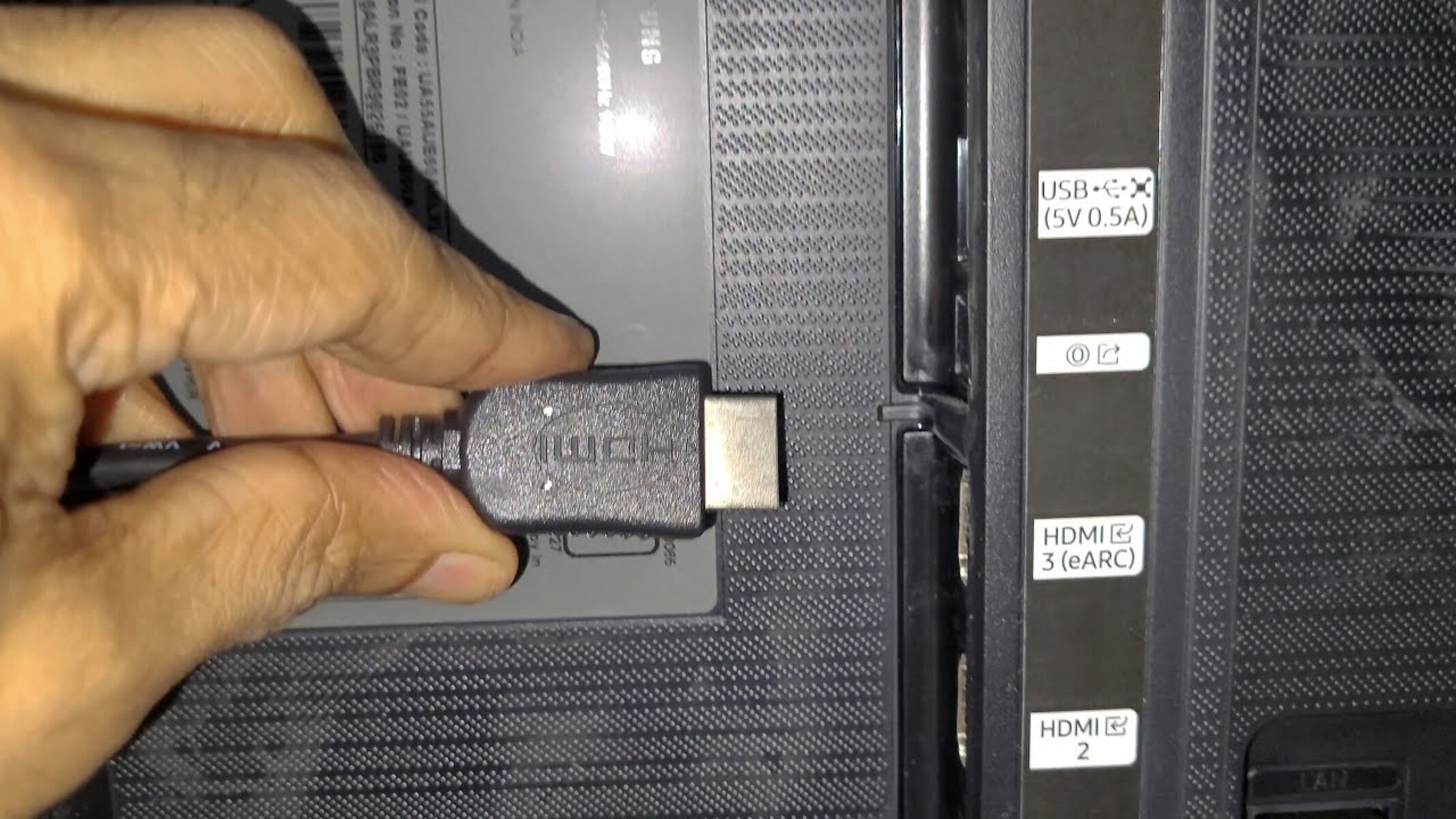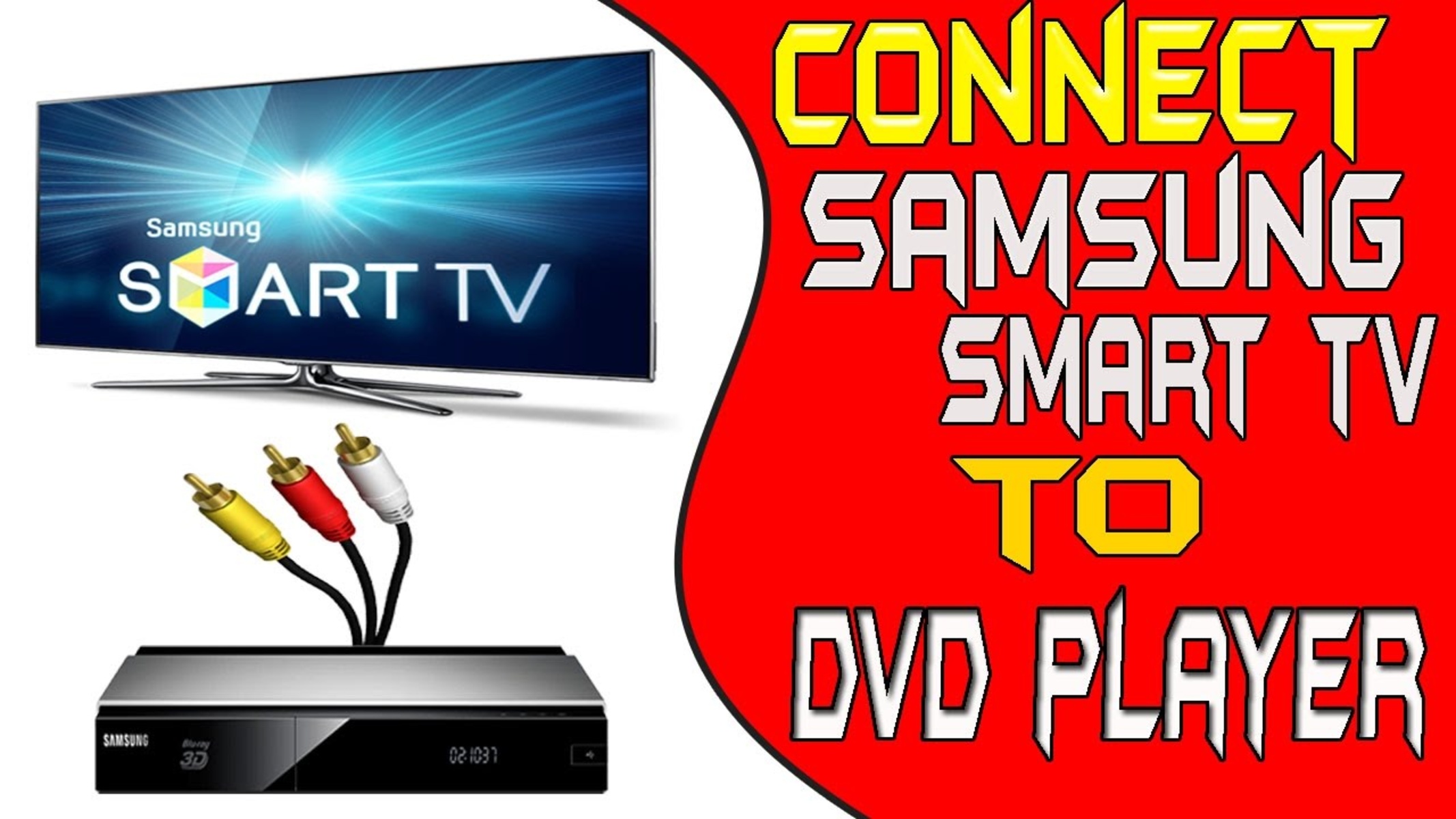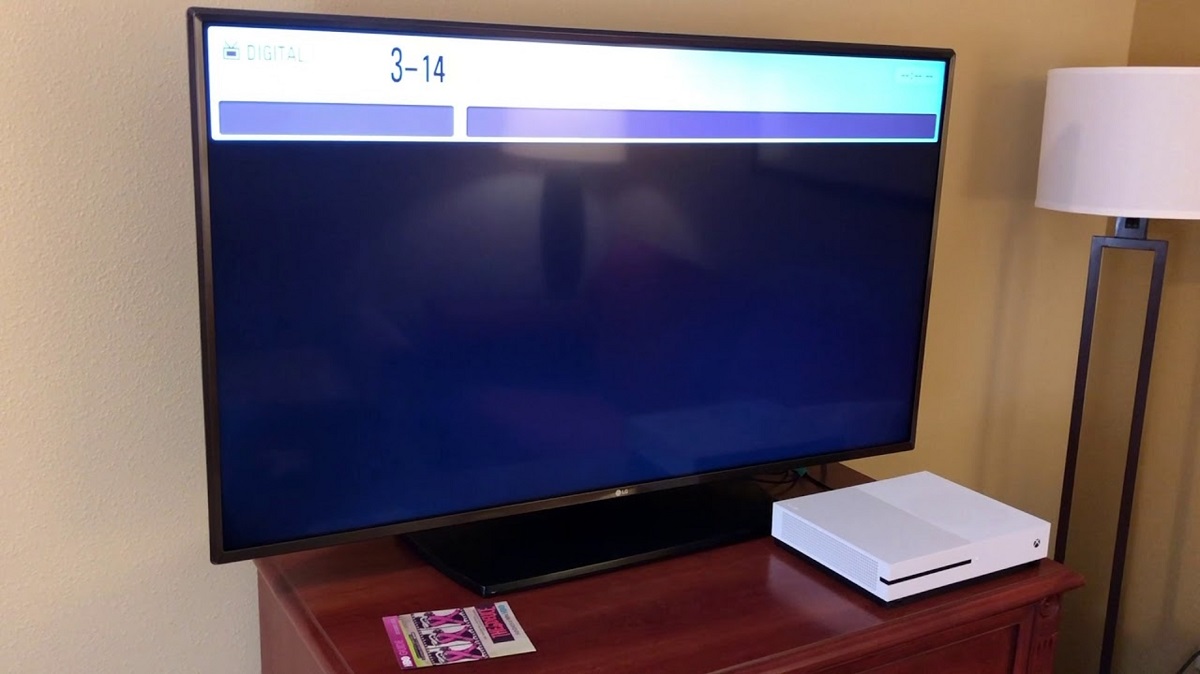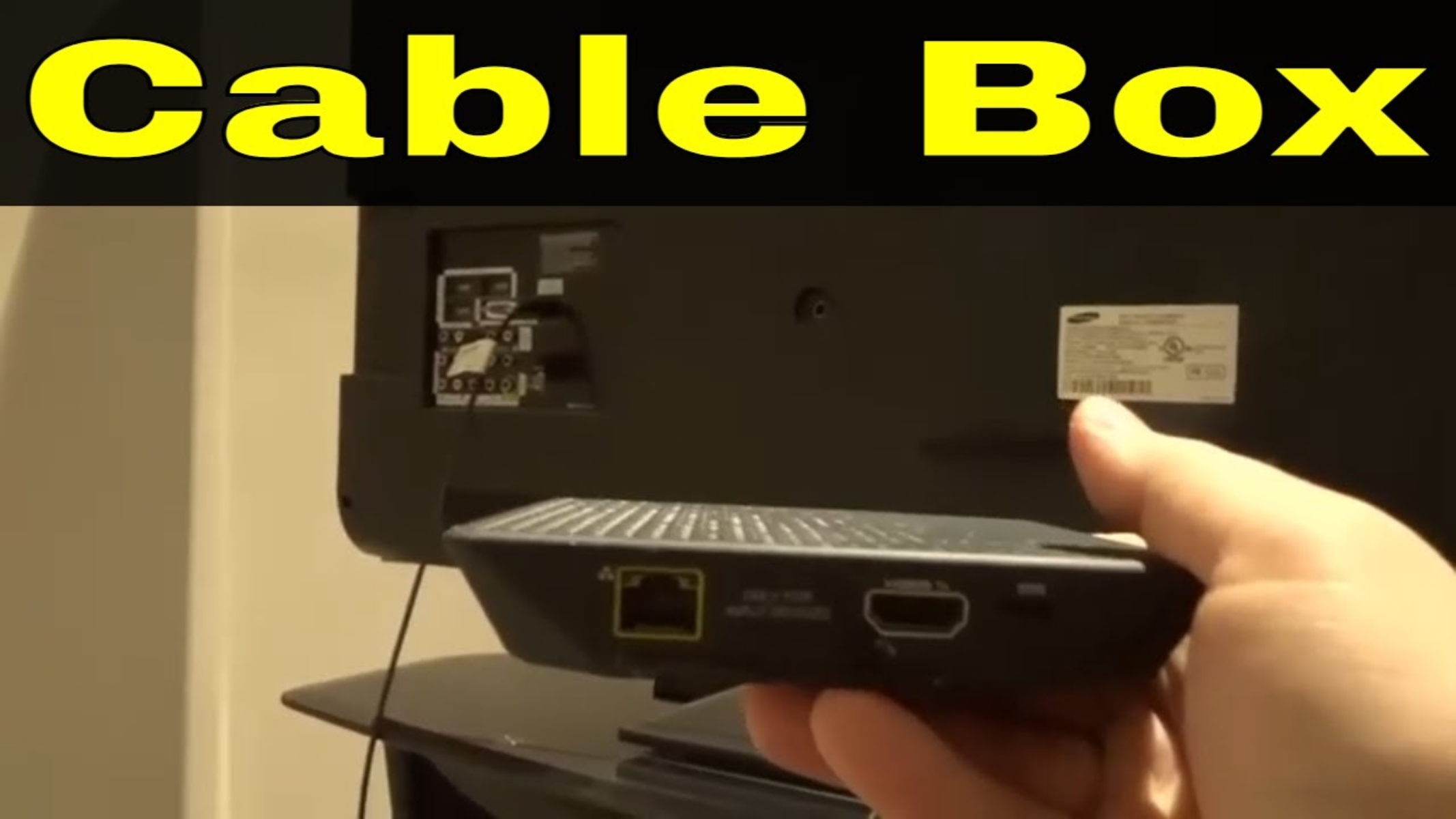Introduction
Welcome to the world of high-definition entertainment! If you’ve ever wondered what those small rectangular ports on the back of your TV are, chances are you’re looking at HDMI ports. HDMI stands for High-Definition Multimedia Interface, and it has become the standard connection for transmitting high-quality audio and video signals between devices.
In today’s modern age, where technology continues to evolve at a rapid pace, HDMI ports have become a crucial element in our home entertainment systems. Whether you’re a movie buff, a gaming enthusiast, or simply enjoy watching your favorite shows on a big screen, understanding HDMI ports and their significance can greatly enhance your viewing experience.
In this article, we will explore what HDMI ports are, their purpose, and the benefits they bring to your TV setup. We will also discuss the various devices that can be connected to an HDMI port and answer some common questions you may have about this versatile connectivity option.
So, buckle up and get ready to dive into the world of HDMI ports and how they can revolutionize your home entertainment system!
What is an HDMI Port?
An HDMI port is a hardware interface that allows the transfer of high-definition audio and video signals between devices. It is a rectangular-shaped port located on the back or side of a TV, monitor, or other multimedia devices.
HDMI ports are designed to support uncompressed digital audio and video data, ensuring a seamless and high-quality viewing experience. They serve as a bridge between your TV and external devices, enabling you to connect them and enjoy their content on the big screen.
The HDMI port utilizes a special cable known as an HDMI cable to transmit data. These cables have a specific connector at each end that fits securely into the HDMI port. The cable carries both audio and video signals, eliminating the need for separate audio and video cables.
One of the key features of HDMI ports is their ability to support high-definition content. They are capable of transmitting video signals at a resolution of 1080p or even higher, depending on the capabilities of the connected devices.
Additionally, HDMI ports come in different versions, with each version offering improved features and capabilities. The most common versions include HDMI 1.4, HDMI 2.0, and the latest HDMI 2.1. These versions introduce advancements such as increased bandwidth, support for high dynamic range (HDR) content, and enhanced audio features.
Overall, an HDMI port serves as the primary connection point for linking your TV to various external devices, providing a reliable and high-performance digital interface for seamless audio and video transmission.
Why do TVs have HDMI ports?
TV manufacturers include HDMI ports on their devices for several compelling reasons. Let’s explore some of the key benefits of having HDMI ports on TVs:
High-Quality Transmission: HDMI ports are designed to deliver high-definition audio and video signals without any loss in quality. Unlike older analog connection options, HDMI ensures a digital connection that captures every detail, providing a stunning and immersive viewing experience.
Compatibility: HDMI has become a universal standard for audio and video connectivity. It is widely supported by a vast range of devices, including gaming consoles, Blu-ray players, set-top boxes, soundbars, and streaming media players. The ubiquity of HDMI allows for seamless compatibility and easy connection between different devices.
Convenience and Simplicity: With HDMI ports, connecting external devices to a TV is incredibly straightforward. All you need is an HDMI cable that connects the device to the TV’s HDMI port. This eliminates the hassle of dealing with multiple cables for audio and video and reduces clutter behind your TV setup.
High-Definition Content: HDMI ports support high-definition video resolutions, ensuring that you can enjoy your favorite movies, TV shows, and games in stunning detail and clarity. Whether it’s 1080p Full HD or even 4K Ultra HD, HDMI delivers the highest quality visual experience available.
Audio Advancements: HDMI ports also support advanced audio formats for a rich and immersive sound experience. Whether it’s Dolby Digital, DTS-HD, or the latest object-based audio formats like Dolby Atmos and DTS:X, HDMI carries the audio signal seamlessly to your sound system or TV speakers.
Future-Proofing: HDMI technology continues to evolve with each new version, introducing enhanced features and capabilities. By having HDMI ports on your TV, you can ensure compatibility with future devices and technologies without needing to replace your TV.
In summary, HDMI ports on TVs provide a convenient and versatile solution for connecting external devices, delivering high-quality audio and video, and future-proofing your entertainment setup. With HDMI, you can enjoy a seamless, immersive, and hassle-free viewing experience like never before.
What devices can be connected to an HDMI port?
HDMI ports offer a wide range of connectivity options, allowing you to connect various devices to your TV. Here are some common devices that can be connected to an HDMI port:
- Gaming Consoles: Whether you have a PlayStation, Xbox, or Nintendo Switch, gaming consoles have HDMI ports that enable you to connect them to your TV. This allows you to play your favorite video games on the big screen, immersing yourself in an enhanced gaming experience.
- Blu-ray/DVD Players: Blu-ray and DVD players come equipped with HDMI ports to connect them to your TV. By doing so, you can enjoy your movie collection with exceptional picture quality and immersive sound.
- Streaming Devices: Popular streaming devices like Roku, Amazon Fire TV Stick, Apple TV, and Google Chromecast have HDMI ports for connecting to your TV. This enables you to stream your favorite shows and movies from popular streaming services directly to your TV screen.
- Soundbars and Home Theater Systems: Soundbars and home theater systems often come with HDMI ports to establish a seamless audio connection with your TV. By connecting them via HDMI, you can enjoy enhanced audio quality and surround sound for a cinematic audio experience.
- Laptops and Computers: Many laptops and computers have HDMI outputs that allow you to connect them to your TV. This enables you to display your computer’s screen on the TV, making it ideal for presentations, gaming, or streaming content from your computer to a larger display.
- Set-Top Boxes and Satellite Receivers: Cable or satellite set-top boxes and receivers typically feature HDMI ports to connect them to your TV. This allows you to access your favorite TV channels and enjoy high-definition programming on your TV screen.
- Digital Cameras and Camcorders: Some digital cameras and camcorders feature HDMI ports for connecting them directly to your TV. This enables you to view your photos and videos on a larger screen, sharing your memories with family and friends.
- Smartphones and Tablets: Certain smartphones and tablets support HDMI output through dedicated adapters or MHL (Mobile High-Definition Link) technology. This allows you to connect your mobile device to your TV and enjoy content on a larger screen.
The versatility of HDMI ports makes it possible to connect a wide range of devices, enhancing your entertainment options and providing a seamless multimedia experience on your TV.
Benefits of using an HDMI port on a TV
Using an HDMI port on your TV offers a multitude of benefits that greatly enhance your entertainment experience. Let’s explore some of the key advantages:
- High-Quality Audio and Video: HDMI ports support uncompressed digital audio and video signals, ensuring a high-quality transmission without any loss in quality. This means you can enjoy crystal-clear picture and immersive sound, bringing your favorite movies, shows, and games to life.
- Convenience and Simplicity: HDMI provides a simple and convenient solution for connecting devices to your TV. With just a single HDMI cable, you can transmit both audio and video signals, eliminating the need for multiple cables and reducing clutter behind your TV setup.
- Universal Compatibility: HDMI has become a universally accepted standard for audio and video connectivity. It is supported by a wide range of devices, including gaming consoles, Blu-ray players, streaming devices, laptops, and more. This ensures seamless compatibility and easy connection between different devices.
- High-Definition Resolutions: HDMI ports are designed to support high-definition video resolutions, including 1080p Full HD and even 4K Ultra HD. This means you can enjoy your favorite content with exceptional detail, sharpness, and clarity, showcasing every minute detail on the screen.
- Advanced Audio Formats: HDMI ports support various audio formats, including surround sound and object-based audio like Dolby Atmos and DTS:X. This allows you to experience immersive, theater-like sound in the comfort of your own home, enhancing your overall audio experience.
- Flexibility for Future Upgrades: HDMI technology continues to evolve with each new version, introducing advanced features and capabilities. By using HDMI ports, you ensure that your TV is future-proofed and compatible with upcoming devices and technologies.
- Easy Remote Control Integration: HDMI also supports Consumer Electronics Control (CEC), a feature that allows you to control multiple devices connected via HDMI with a single remote control. This simplifies the overall user experience and eliminates the need for separate remotes.
- Enhanced Gaming Experience: HDMI ports offer low latency connectivity, making them ideal for connecting gaming consoles. This ensures a smooth gaming experience with minimal lag, allowing you to fully immerse yourself in your favorite video games.
By utilizing HDMI ports on your TV, you can enjoy the benefits of high-quality audio and video, universal compatibility, convenience, and future-proofing. HDMI truly revolutionizes the way we connect and experience entertainment in our homes.
Common questions about HDMI ports on TVs
As HDMI ports have become a standard feature on TVs, it’s natural to have questions about their usage and functionality. Here are some common questions and answers to help you understand HDMI ports better:
-
Can I connect multiple devices to one HDMI port?
Yes, you can connect multiple devices to one HDMI port using an HDMI switch or an AV receiver. These devices expand the number of HDMI inputs on your TV, allowing you to connect multiple devices and switch between them easily. -
What is HDMI ARC?
HDMI ARC (Audio Return Channel) is a feature available on some HDMI ports, typically labeled as “ARC.” It allows the TV to send audio signals back to a connected soundbar, home theater receiver, or AV receiver through the HDMI cable. This eliminates the need for a separate audio cable and simplifies the setup. -
Can I use an older HDMI cable with newer devices?
Yes, older HDMI cables are generally compatible with newer HDMI devices. However, to take advantage of the latest features and capabilities, such as 4K resolution, high refresh rates, or HDR, it’s recommended to use a high-speed HDMI cable that supports the desired specifications. -
How long can an HDMI cable be?
The length of an HDMI cable can vary depending on the quality and specifications. Standard HDMI cables can transmit signals effectively up to 15-25 feet (4.6-7.6 meters) without any loss in quality. However, for longer distances, you may need to use an HDMI cable with built-in signal boosters or consider using HDMI extenders. -
Can I connect my laptop to a TV using HDMI?
Yes, if your laptop has an HDMI output port, you can connect it to your TV using an HDMI cable. This allows you to mirror your laptop’s screen or extend it to the TV, enabling you to enjoy content on a larger display. -
Can I connect a DVD player with a HDMI port to an older TV without HDMI?
Yes, you can connect a DVD player with an HDMI port to an older TV without HDMI using an HDMI to RCA converter. This converter converts the HDMI signal to RCA (composite or component) signals that can be recognized by the older TV. -
How do I know which HDMI version my TV supports?
You can typically find information about your TV’s HDMI version in the user manual or by checking the specifications on the manufacturer’s website. Alternatively, you can check the labeling on the HDMI port itself, as some TVs may mention the supported HDMI version next to the port.
These are just some of the common questions asked about HDMI ports on TVs. If you have any specific concerns or queries, referring to your TV’s manual or reaching out to the manufacturer’s customer support can provide further assistance.
Conclusion
HDMI ports have revolutionized the way we connect and experience multimedia content on our TVs. They offer a convenient and versatile solution for transmitting high-definition audio and video signals between devices, providing a seamless and immersive viewing experience.
Throughout this article, we have explored what HDMI ports are, why TVs have them, the devices that can be connected to them, and the benefits they bring to our entertainment setups. We have also addressed some common questions to help you better understand HDMI ports and their functionality.
With the universal compatibility of HDMI, you can connect gaming consoles, Blu-ray players, streaming devices, laptops, and more to your TV, expanding your entertainment options and enjoying high-quality audio and video. The simplicity and convenience of HDMI make it incredibly easy to set up and provide a clutter-free solution with its single cable transmission.
As technology continues to evolve, HDMI ports continue to advance with each new version, introducing improved features, higher resolutions, and enhanced audio capabilities. This ensures that your TV remains compatible with future devices and provides an optimal viewing experience for years to come.
Whether you’re an avid movie enthusiast, a dedicated gamer, or simply enjoy streaming your favorite shows, HDMI ports allow you to elevate your entertainment to new heights. So, grab your HDMI cable, connect your devices to your TV, and immerse yourself in the world of high-definition audio and video.







